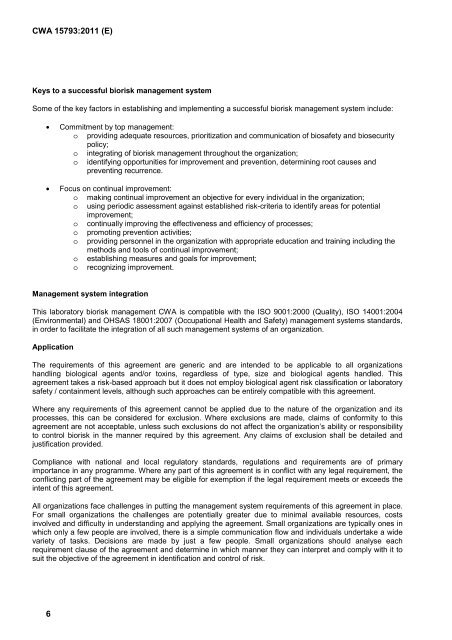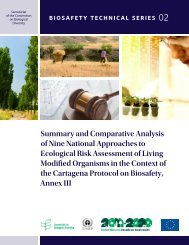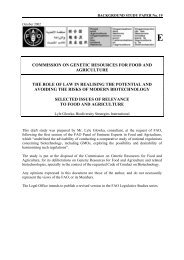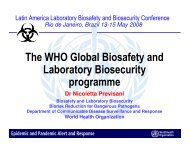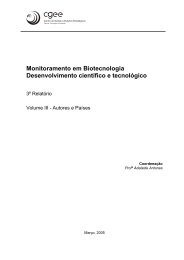CEN WORKSHOP AGREEMENT CWA 15793
CEN WORKSHOP AGREEMENT CWA 15793
CEN WORKSHOP AGREEMENT CWA 15793
Create successful ePaper yourself
Turn your PDF publications into a flip-book with our unique Google optimized e-Paper software.
<strong>CWA</strong> <strong>15793</strong>:2011 (E)<br />
Keys to a successful biorisk management system<br />
Some of the key factors in establishing and implementing a successful biorisk management system include:<br />
• Commitment by top management:<br />
o providing adequate resources, prioritization and communication of biosafety and biosecurity<br />
policy;<br />
o integrating of biorisk management throughout the organization;<br />
o identifying opportunities for improvement and prevention, determining root causes and<br />
preventing recurrence.<br />
• Focus on continual improvement:<br />
o making continual improvement an objective for every individual in the organization;<br />
o using periodic assessment against established risk-criteria to identify areas for potential<br />
improvement;<br />
o continually improving the effectiveness and efficiency of processes;<br />
o promoting prevention activities;<br />
o providing personnel in the organization with appropriate education and training including the<br />
methods and tools of continual improvement;<br />
o establishing measures and goals for improvement;<br />
o recognizing improvement.<br />
Management system integration<br />
This laboratory biorisk management <strong>CWA</strong> is compatible with the ISO 9001:2000 (Quality), ISO 14001:2004<br />
(Environmental) and OHSAS 18001:2007 (Occupational Health and Safety) management systems standards,<br />
in order to facilitate the integration of all such management systems of an organization.<br />
Application<br />
The requirements of this agreement are generic and are intended to be applicable to all organizations<br />
handling biological agents and/or toxins, regardless of type, size and biological agents handled. This<br />
agreement takes a risk-based approach but it does not employ biological agent risk classification or laboratory<br />
safety / containment levels, although such approaches can be entirely compatible with this agreement.<br />
Where any requirements of this agreement cannot be applied due to the nature of the organization and its<br />
processes, this can be considered for exclusion. Where exclusions are made, claims of conformity to this<br />
agreement are not acceptable, unless such exclusions do not affect the organization’s ability or responsibility<br />
to control biorisk in the manner required by this agreement. Any claims of exclusion shall be detailed and<br />
justification provided.<br />
Compliance with national and local regulatory standards, regulations and requirements are of primary<br />
importance in any programme. Where any part of this agreement is in conflict with any legal requirement, the<br />
conflicting part of the agreement may be eligible for exemption if the legal requirement meets or exceeds the<br />
intent of this agreement.<br />
All organizations face challenges in putting the management system requirements of this agreement in place.<br />
For small organizations the challenges are potentially greater due to minimal available resources, costs<br />
involved and difficulty in understanding and applying the agreement. Small organizations are typically ones in<br />
which only a few people are involved, there is a simple communication flow and individuals undertake a wide<br />
variety of tasks. Decisions are made by just a few people. Small organizations should analyse each<br />
requirement clause of the agreement and determine in which manner they can interpret and comply with it to<br />
suit the objective of the agreement in identification and control of risk.<br />
6


